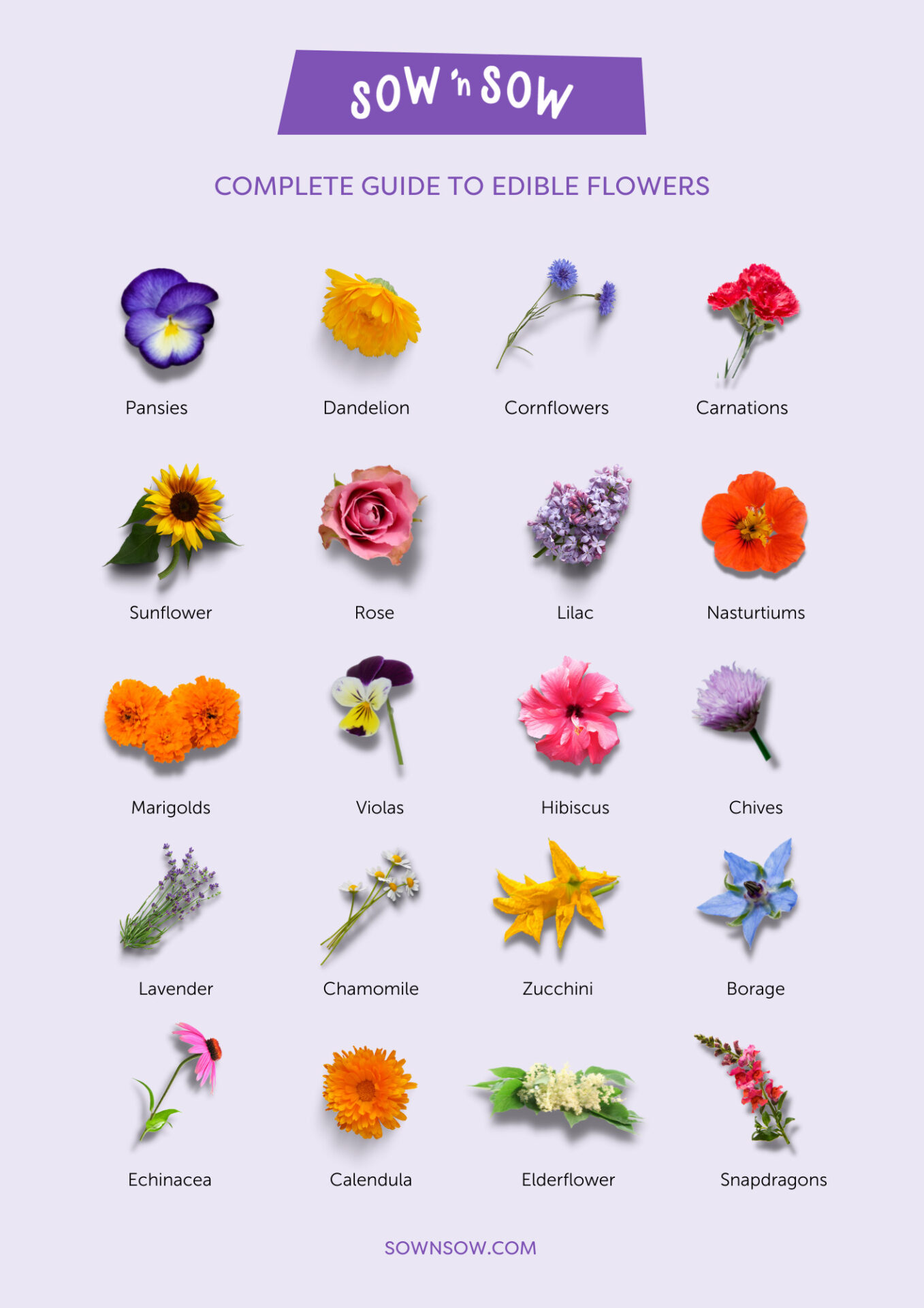Edible flowers are a wonderful addition to any culinary experience. They add color, flavor, and a touch of elegance to dishes, making them a favorite among chefs, food enthusiasts, and home cooks alike. Whether you’re looking to enhance your salads, desserts, or main courses, finding edible flowers can unlock a world of creativity and taste. In this guide, we’ll explore the ways to find and identify edible flowers, and offer tips on incorporating them into your cooking.
Identifying Edible Flowers
Before you set out to find edible flowers, it’s important to understand how to identify them. Not all flowers are safe to eat, so it’s essential to be able to differentiate between edible varieties and those that may be toxic. Some common edible flowers include nasturtiums, violets, roses, and lavender, but there are many others to discover.
Where to Look for Edible Flowers
One of the best places to find edible flowers is in your own garden. If you have a green thumb, consider cultivating your own edible flower patch. However, if gardening isn’t your forte, you can often find edible flowers at farmer’s markets, specialty grocery stores, or even foraging in nature. Be sure to research which flowers are safe to eat and where to find them in your area.

Credit: www.ebay.com
Foraging for Edible Flowers
Foraging for edible flowers can be a fun and rewarding experience. When foraging, it’s essential to prioritize safety and sustainability. Always seek permission if you’re foraging on private land, and be mindful of the environment by only picking a small number of flowers from each plant. Additionally, it’s crucial to accurately identify the flowers before consuming them.

Credit: www.amazon.com
Incorporating Edible Flowers into Your Cooking
Once you’ve found a plentiful supply of edible flowers, it’s time to get creative in the kitchen. There are numerous ways to incorporate edible flowers into your cooking, including using them as garnishes, infusing them into syrups or vinegars, or incorporating them into baked goods such as cakes and muffins. The delicate flavors and vibrant colors of edible flowers can elevate virtually any dish.
Recipe Inspiration
Looking for some recipe inspiration to get you started with cooking edible flowers? Here are a few ideas to ignite your culinary creativity:
- Edible Flower Salad: Create a colorful and nutritious salad by adding nasturtiums, pansies, and borage flowers to your mixed greens. The flowers will provide a burst of flavor and visual appeal.
- Lavender Infused Lemonade: Add a touch of sophistication to your lemonade by infusing it with fragrant lavender flowers. This refreshing beverage is perfect for warm summer days.
- Rose Petal Cupcakes: Elevate your favorite cupcake recipe by incorporating delicate rose petals into the batter and frosting. The floral notes will add an elegant touch to this classic treat.
Frequently Asked Questions On How To Find Edible Flowers: A Complete Guide To Locating The Best Blossoms
How Do I Find Edible Flowers Near Me?
You can start by checking local farmers markets, specialty grocery stores, or online flower vendors that offer edible flower options.
What Are Some Common Edible Flowers?
Common edible flowers include pansies, marigolds, nasturtiums, lavender, and hibiscus. It’s important to ensure they are pesticide-free before consumption.
How Can I Use Edible Flowers In Cooking?
Edible flowers can be used to garnish salads, desserts, beverages, and even savory dishes. They add a pop of color and a unique flavor to your culinary creations.
Are All Flowers Edible?
No, not all flowers are edible. Some species can be toxic or have pesticides sprayed on them. Make sure to research and identify which flowers are safe to consume.
Conclusion
Finding edible flowers opens up a world of culinary possibilities. Whether you’re foraging in nature, cultivating your own garden, or sourcing them from local markets, edible flowers can elevate your cooking to new heights. With a keen eye for identification and a sense of adventure in the kitchen, discovering and incorporating edible flowers into your meals will transform your dining experiences into something truly extraordinary.
